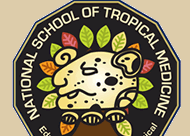The start of June marked the launch of classes at the National School of Tropical Medicine. The school was created last year and is headed up by Dr. Peter Hotez, an expert in vaccines and neglected tropical diseases.
The school’s new eight-week diploma is being offered to med students and physicians only, but folks at the Baylor College of Medicine, where the school is based, say they plan to eventually adapt it for nurses, veterinarians and other groups. In time, the school will also offer a masters in tropical medicine.
It’s a significant development because until now, the U.S. really hasn’t had a whole school devoted to understanding these kinds of medical issues (though some institutions do offer coursework on the topic). For the most part, doctors and public health professionals had to head to Europe to develop medical expertise in this area.
But perhaps the bigger issue has to do with physician training in this country. Hotez pioneered research, which found that thousands of people in the U.S. — and not only immigrants — suffer from these conditions. Often neglected tropical diseases affect the poorest members of society. But doctors aren’t trained to detect or treat these diseases. Patients either go undiagnosed or receive incorrect treatment.
So the school has the potential to not only put the U.S. on the global tropical medicine map, but it could also provide important medical education for health professionals who work with low-income and immigrant populations in this country.
In fact, in an interview over the weekend on BioCentury This Week, that’s why Hotez says he founded the school.
“A lot of physicians and other health care providers don’t really know how to recognize Chagas disease or Cysticercosis,” according to Hotez.
The new school is modeled on the Liverpool School of Tropical Medicine and the London School of Hygiene and Tropical Medicine, which have both been around for more than a century.
Houston might not be the first place that comes to mind for such a major piece of global health infrastructure (though I’ve argued it is an emerging hub), but Hotez argues that it is an ideal location because of its extensive health care infrastructure and resources. Using the Texas Medical Center allows the school to “tap the best,” he said on BioCentury This Week. Baylor’s website lists a few more reasons why the location works, including:
– Baylor College of Medicine is located in Houston, an international city on the 30th parallel North of the equator. Sharing this parallel with us are three of the world’s largest cities Delhi, Shanghai and Cairo each with over 10 million people and with a combined population of 50 million people, not to mention some other important places in the world including Jerusalem, Islamabad, Bengazi, Tripoli, Marrakech, Wuhan, Kathmandu, Chihuahua, Riyadh, Shiraz and Baghdad, each within just one, two or three degrees latitude from Houston. New evidence indicates a hidden burden of NTDs in the poorest parts of the United States but especially in Texas and the surrounding Gulf Coast. Among the NTDs now endemic to Texas are Chagas disease, cysticercosis, dengue, leishmaniasis and toxocariasis.
-This location combined with a multi-cultural population – one in five Houstonians were born outside of the United States – makes Houston an international city. Houston’s entrepreneurial spirit has made it the energy capital of the world and given rise to global companies in a wide array of industries.
